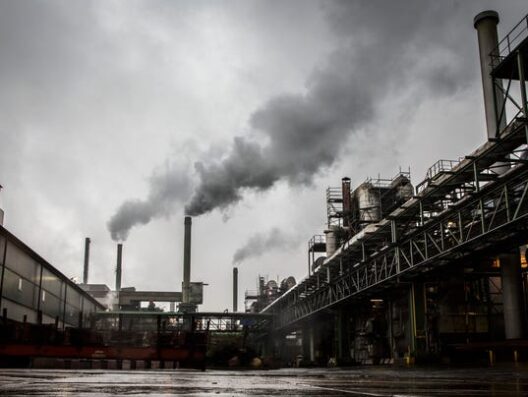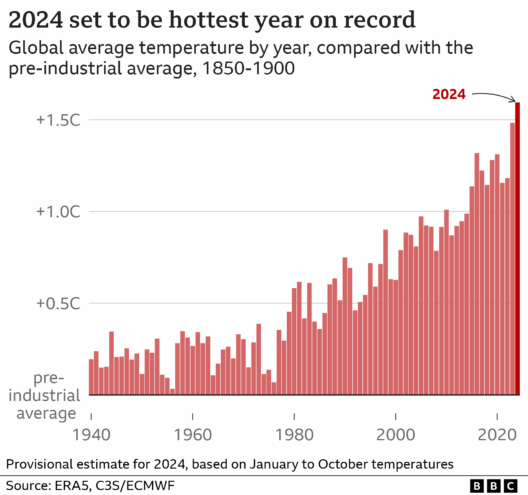The intricate tapestry of our planet’s climate resembles a complex symphony, where various instruments contribute to a harmonious (or discordant) outcome. In this grand performance, humans have assumed an increasingly prominent role, yet the question remains: are we the principal musicians driving global warming, or merely one instrument in an elaborate orchestration of planetary processes? This inquiry delves into the multifaceted facets of global warming, exploring natural and anthropogenic factors that shape our climate.
At the outset, it is paramount to understand the very essence of global warming. It is the gradual increase in Earth’s average surface temperature due to the accumulation of greenhouse gases in the atmosphere, primarily carbon dioxide (CO2), methane (CH4), and nitrous oxide (N2O). These gases function as a warming blanket, trapping heat and preventing it from escaping back into space. While the emission of these gases has escalated dramatically in recent decades due to human activities, the narrative is not as simplistic as it may seem.
The pivotal role of human activity in this environmental saga is undeniable. As industrialization burgeoned in the 18th century, so too did our reliance on fossil fuels—coal, oil, and natural gas—as primary energy sources. This transition heralded an era of unparalleled growth and prosperity but came at a significant ecological cost. The burning of these fossil fuels releases vast quantities of CO2, the chief culprit in the greenhouse gas equation. Deforestation, agriculture, and waste management practices further exacerbate the situation, releasing additional emissions into the atmosphere.
Critics may contend that attributing global warming solely to human actions oversimplifies a considerably more intricate issue. Natural phenomena, such as volcanic eruptions, solar radiation variations, and oceanic currents, also influence climate. For instance, volcanic eruptions can inject sulfur dioxide into the stratosphere, leading to short-term cooling effects. Similarly, variations in solar activity impact the amount of solar energy reaching the Earth, which can precipitate climatic shifts over extended timescales.
Moreover, the Earth’s climate system is a dynamic entity characterized by feedback mechanisms. A prime example is the albedo effect—whereby melting ice leads to reduced reflectivity, increasing the absorption of sunlight and consequently accelerating warming. Such intricacies illustrate that while human actions are a significant driving force, they are part of a broader, more complex puzzle interwoven with natural elements.
As we probe deeper into the natural influences on climate change, we uncover a historical context that unveils significant variations prior to the industrial era. Paleoclimate data, derived from ice cores, tree rings, and sediment layers, reveal that Earth’s climate has oscillated between glacial and interglacial periods over millennia. These shifts are often driven by changes in Earth’s orbit, axial tilt, and the cyclical nature of glacial and interglacial phases, collectively known as Milankovitch cycles.
However, the current trajectory of warming is alarming not merely for its existence but for the unprecedented speed at which it is occurring. The United Nations Intergovernmental Panel on Climate Change (IPCC) asserts that recent global temperature increases are attributable predominantly to anthropogenic influence. The rapid acceleration observed since the late 20th century starkly contrasts with previous climatic shifts, suggesting that while natural forces do play a role, human activity is the contemporary catalyzing agent.
At this juncture, it is vital to differentiate between short-term fluctuations and long-term trends. Weather—characterized by daily atmospheric conditions—is often confused with climate, which refers to the average conditions over extended periods. Localized extremes do not negate the overarching trend evident in global temperature rise. Each record-breaking heatwave or heavy precipitation event serves as a reminder of the interconnectedness of weather and climate, perpetuating the urgent necessity to address the escalating concerns of global warming.
Engagement with the topic necessitates acknowledging the intricate web of societal, economic, and environmental interactions at play. The ramifications of global warming extend into every facet of human existence, from changes in agricultural productivity to the displacement of populations due to rising sea levels. As stewards of the Earth, our choices manifest in both positive and negative consequences. Transitioning to renewable energy sources, enhancing energy efficiency, and fostering sustainable agriculture are among the myriad solutions posed to mitigate human impact while recognizing our place in the planetary puzzle.
Ultimately, framing the narrative of global warming as a simplistic dichotomy of human versus natural influences overlooks the profound complexity woven into climate dynamics. The phenomenon of global warming is an intricate interplay of both human ingenuity and the immutable forces of nature—an amalgamation that requires a holistic understanding to address effectively. Elevated global temperatures represent a clarion call, urging humanity to comprehend its role while equitably considering the natural systems at work.
As discourse around global warming escalates, the importance of nuanced dialogue and informed decision-making cannot be overstated. We stand on the precipice of opportunity—an opportunity to reshape our relationship with the environment, cultivate resilience in the face of change, and harness innovation to forge a sustainable future. In embarking on this transformative journey, it is imperative to navigate the labyrinthine complexities of climate change with a discerning eye, recognizing the multifaceted interdependencies that define our planet. Embracing our responsibility with clarity and purpose will ultimately steer us towards solutions that resonate with both ecological integrity and social equity.








